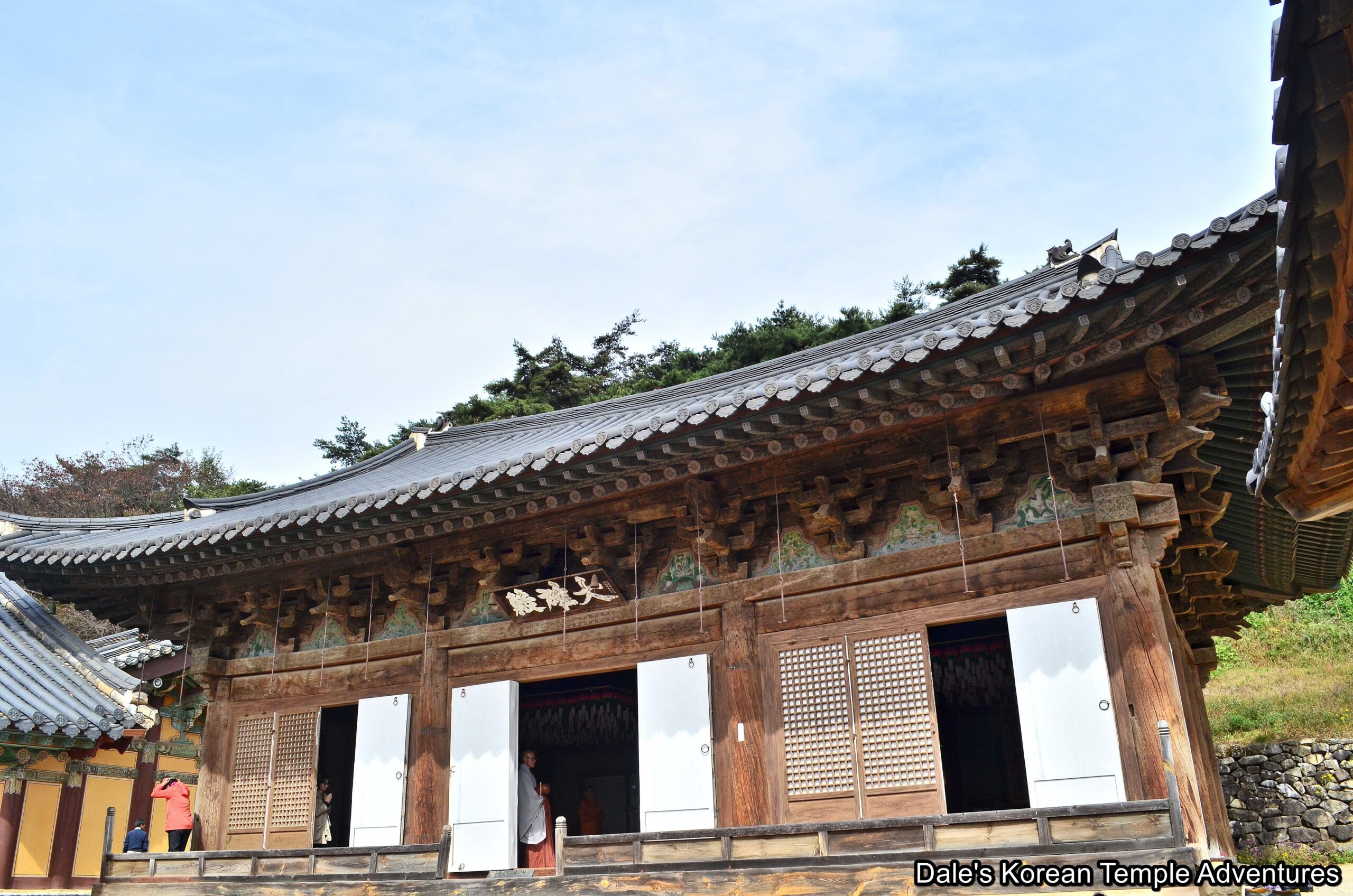Daeung-jeon – Great Hero Hall: 대웅전
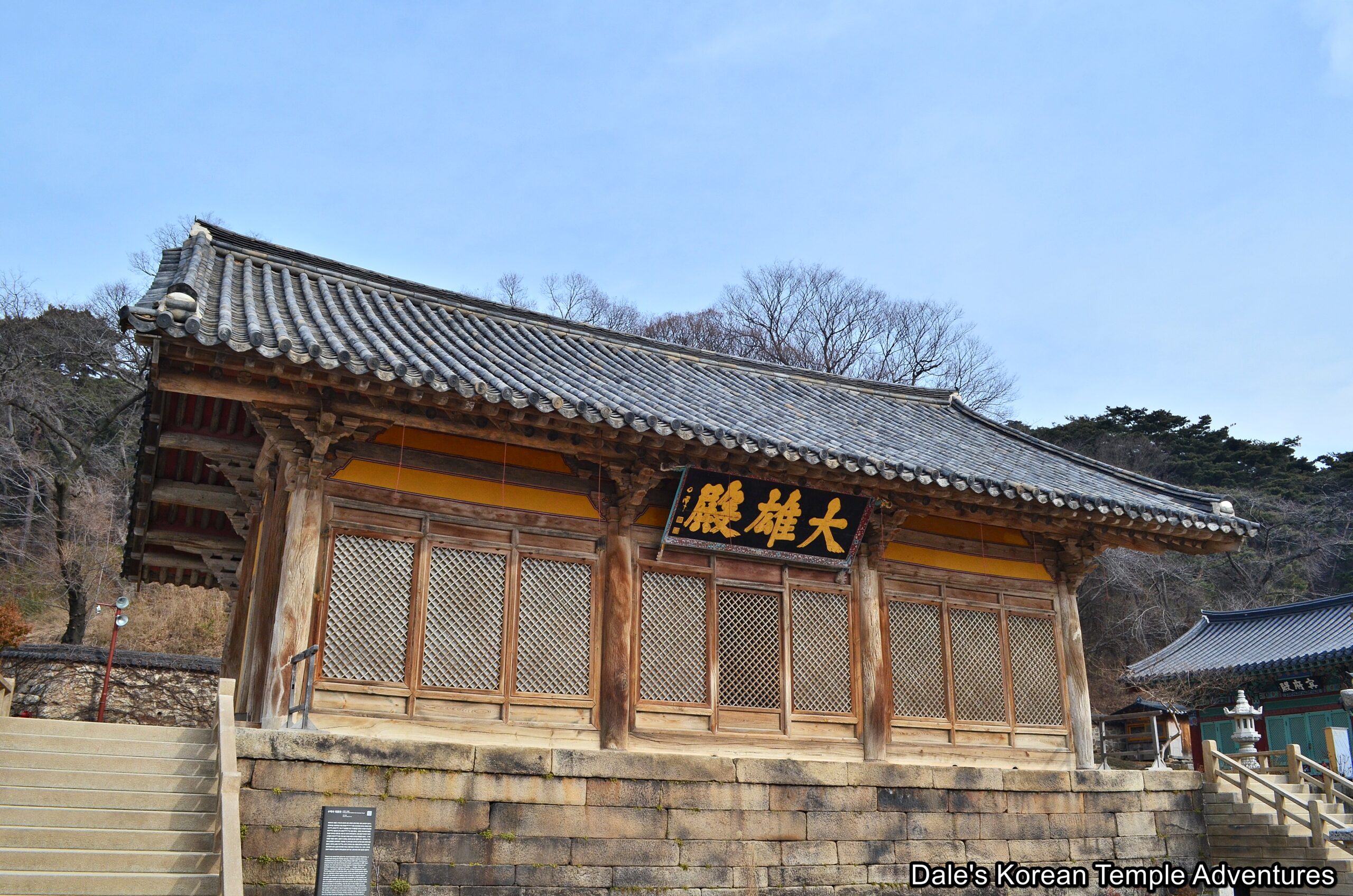
Introduction
When you visit a Korean Buddhist temple, you’ll see numerous halls dedicated to various Buddhas, Bodhisattvas, and deities. The diversity at a Buddhist temple comes from Korean shamanism, as well as Mahayana Buddhism. Within Mahayana Buddhism, there are literally hundreds of Buddhas (fully enlightened beings) and Bodhisattvas (enlightened beings, who through compassion forgo nirvana in order to help save other beings). And while Mahayana Buddhism has hundreds of Buddhas and Bodhisattvas, the Korean form of Mahayana Buddhism usually only worships a select few.
Daeung-jeon Design
The central figure to Buddhism is Seokgamoni-bul (The Historical Buddha). Inside the Daeung-jeon Hall sits a centrally located statue of Seokgamoni-bul (The Historical Buddha) on the main altar. Daeung-jeon literally means “The Great Hero Hall,” in reference to Seokgamoni-bul. Other variations of the Daeung-jeon name are the Daeungbo-jeon, which translates as “The Jeweled Hall of the Great Hero” in English.
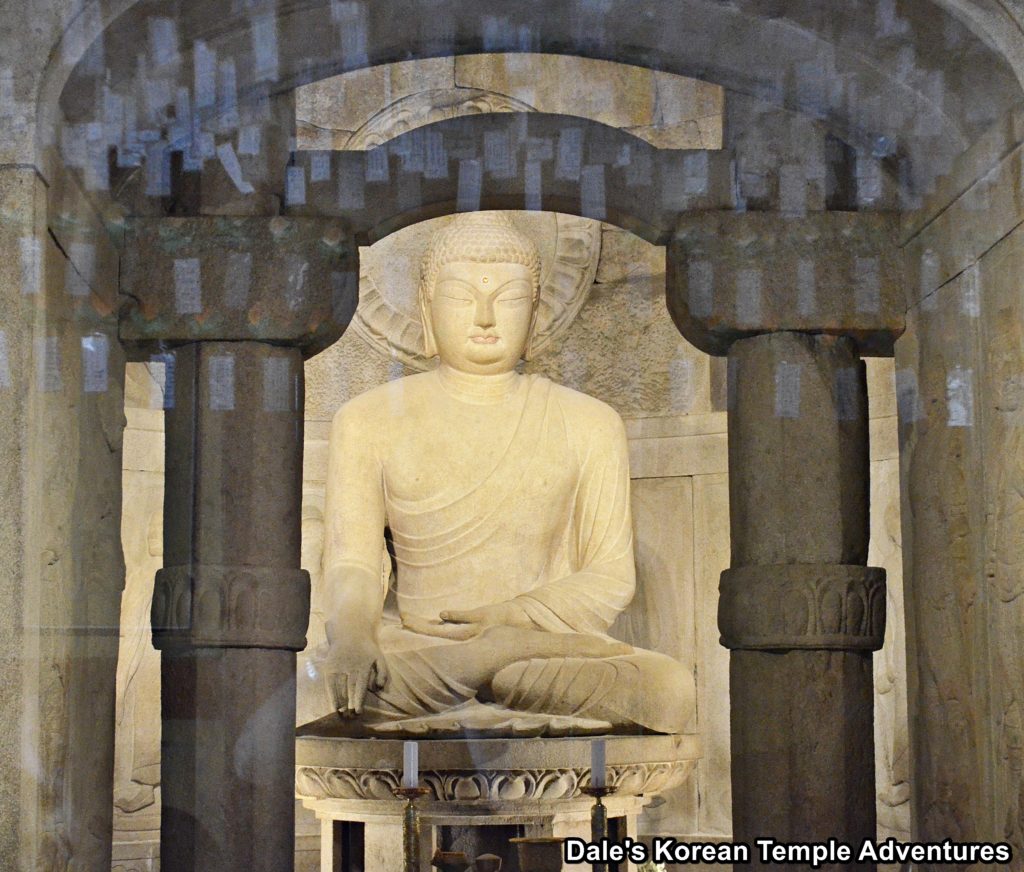
As a rule, the Daeung-jeon Hall is centrally located inside the temple complex. And sitting in the central location on the main altar is Seokgamoni-bul. The way that you can identify Seokgamoni-bul is through his mudra, or ritual gesture, which is known as a “suin,” in Korean. Actually, Seokgamoni-bul can be identified through a few mudras, but one of the most common is the “Calling the Earth to Witness.” This mudra recalls the story about the Buddha just after he had gained enlightenment. He was challenged by Mara about his authority. The Buddha called the earth to witness his many good deeds and actions in his past lives, thus justifying his authority. The way that this mudra is physically expressed is through a seated Seokgamoni-bul. As he is seated, Seokgamoni-bul has his right hand hanging over his right knee with his palm turned inwards. Meanwhile, the left hand still rests on his lap. Sometimes the index finger of his right hand will be pointed to the earth, as well; but usually, the whole hand points downwards towards the ground. The most famous statue with this mudra in Korea can be found at Seokguram Hermitage in Gyeongju.
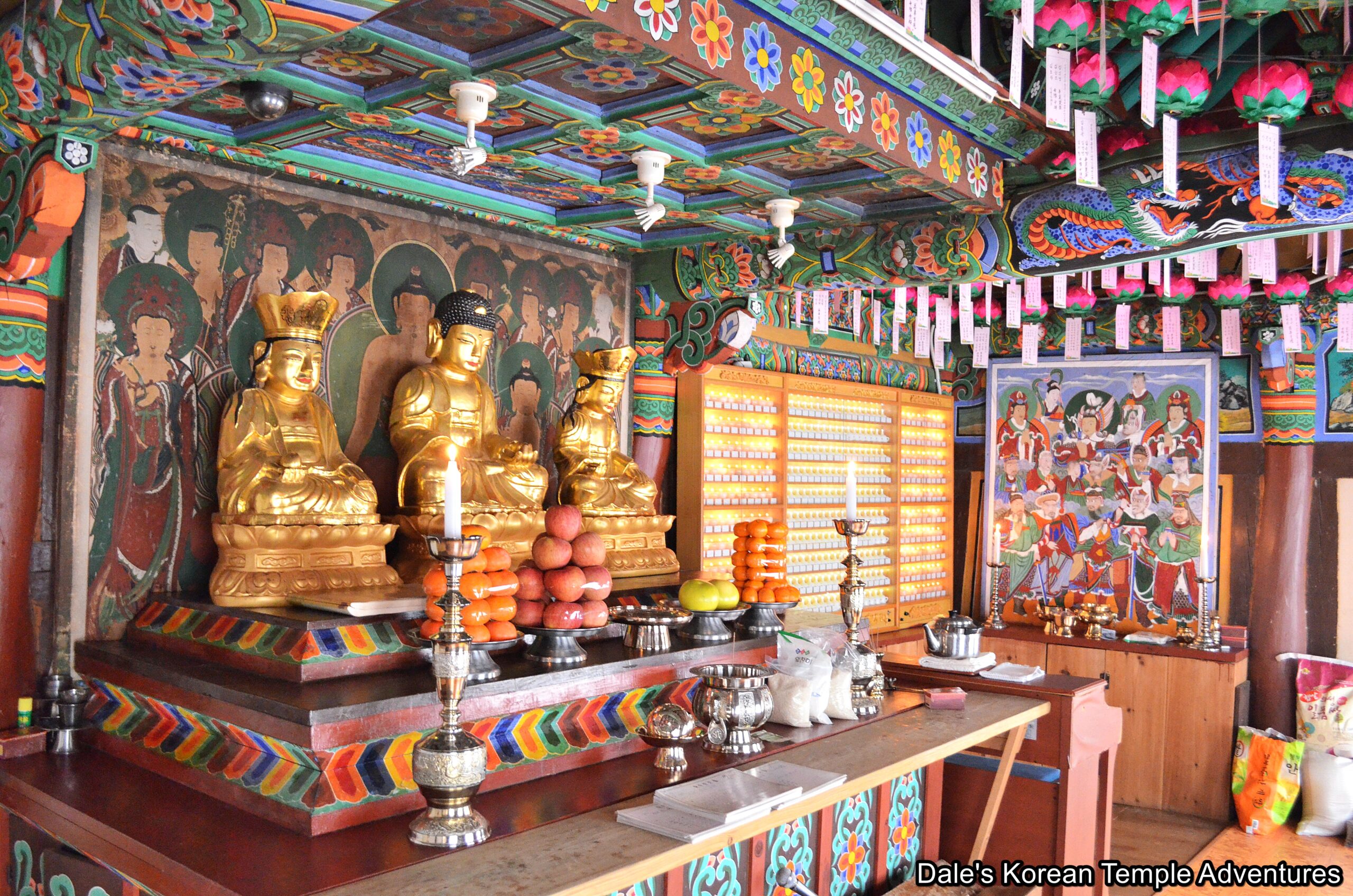
Flanking the seated statue of Seokgamoni-bul, and housed inside the Daeung-jeon Hall, are two Bodhisattvas. The first one to the left is typically Munsu-bosal (The Bodhisattva of Wisdom). Like some other Bodhisattvas, he wears a large golden crown. Also, Munsu-bosal can either be holding a sword or a trident in his hands. The other Bodhisattva that sits on the Daeung-jeon main altar is Bohyeon-bosal (The Bodhisattva of Power). Bohyeon-bosal represents the teaching, meditation, and practice of the Buddha.
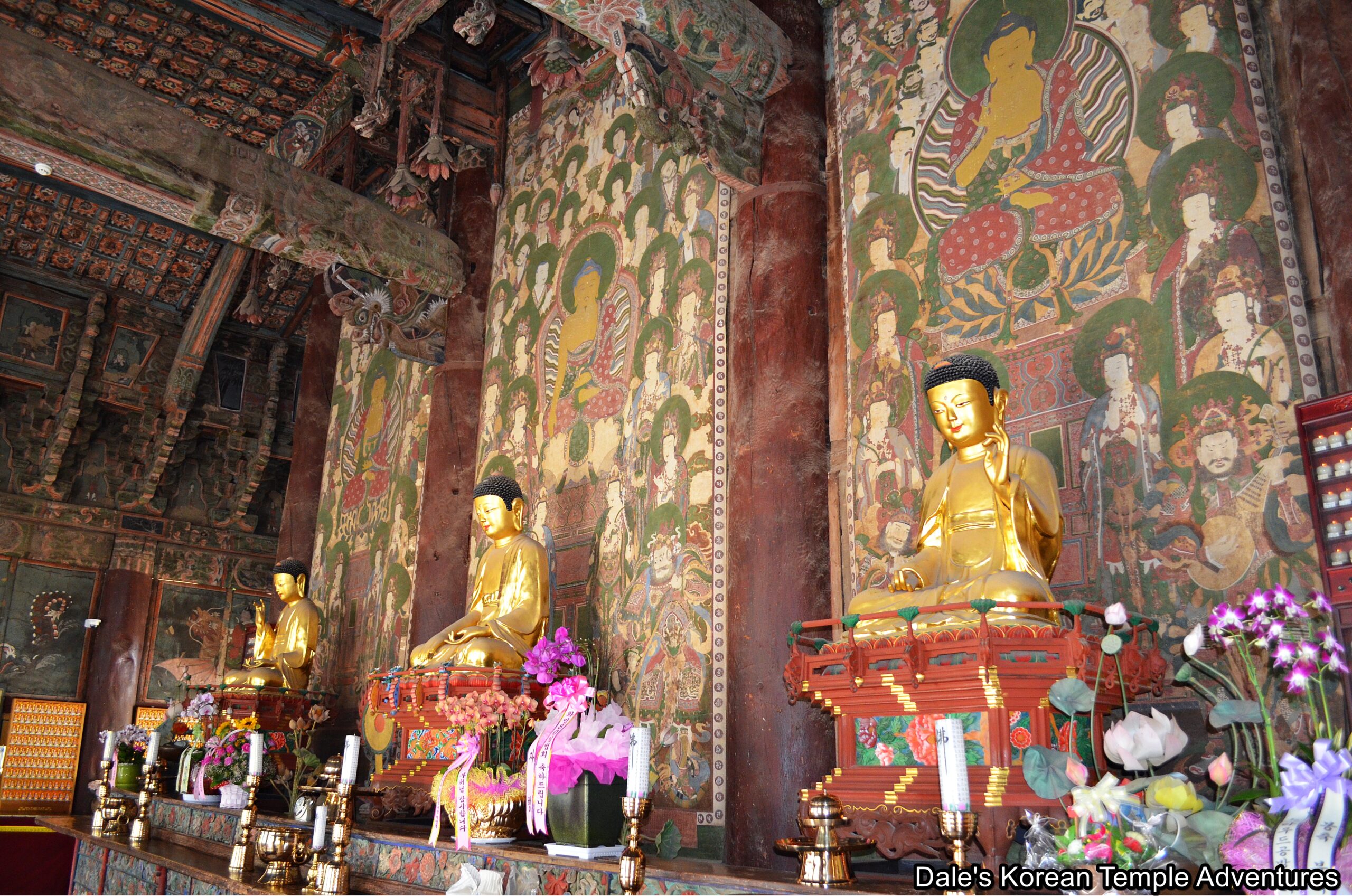

In a “Jeweled Hall of the Great Hero,” while the central statue remains Seokgamoni-bul, the accompanying statues change. Instead of housing a statue of Munsu-bosal and Bohyeon-bosal, this type of hall houses Amita-bul (The Buddha of the Western Paradise) and Yaksayeorae-bul (The Medicine Buddha, as well as the Buddha of the Eastern Paradise). This triad is a manifestation of the reality of life and Samsara. From sunrise in the east with Yaksayeorae-bul, to life with Seokgamoni-bul, to death in the west with the sun-setting with Amita-bul. A great physical representation of this can be found in the lower courtyard of Tongdosa Temple with, from left to right, the Yaksa-jeon Hall (dedicated to Yaksayeorae-bul), the Yeongsan-jeon Hall (dedicated to Seokgamoni-bul), and the Geukrak-jeon Hall (dedicated to Amita-bul). As for a Daeungbo-jeon Hall, a great example of this triad can be found at Jikjisa Temple in Gimcheon, Gyeongsangbuk-do.
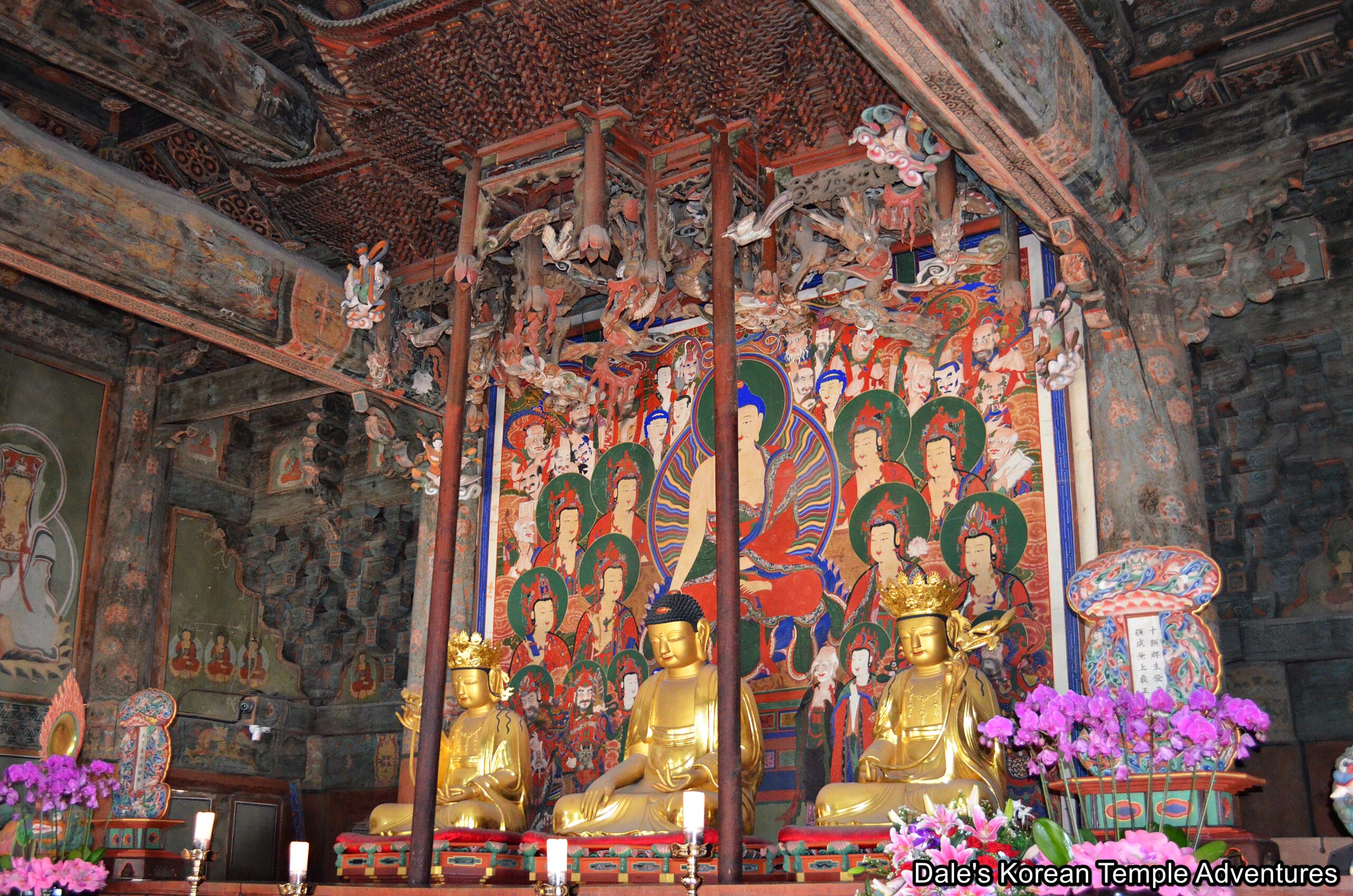
Another triad may be housed inside the Daeung-jeon. Like the other two triadic formations, Seokgamoni-bul still remains in the centre. And just like the two previous triads, the flanking statues change. In this third variation, Yeondeung-bul (The Past Buddha) appears to the left, while Mireuk-bul (The Future Buddha) appears to the right.

And yet another way that the triad housed inside of the Daeung-jeon Hall can be formed, especially at smaller-sized temples, is with Seokgamoni-bul sitting in the centre with two different Bodhisattvas at his side. This time, Jijang-bosal (The Bodhisattva of the Afterlife) appears on one side with Gwanseeum-bosal (The Bodhisattva of Compassion) on the other. This triad encompasses perhaps the three most popular figures in Korean Buddhism.
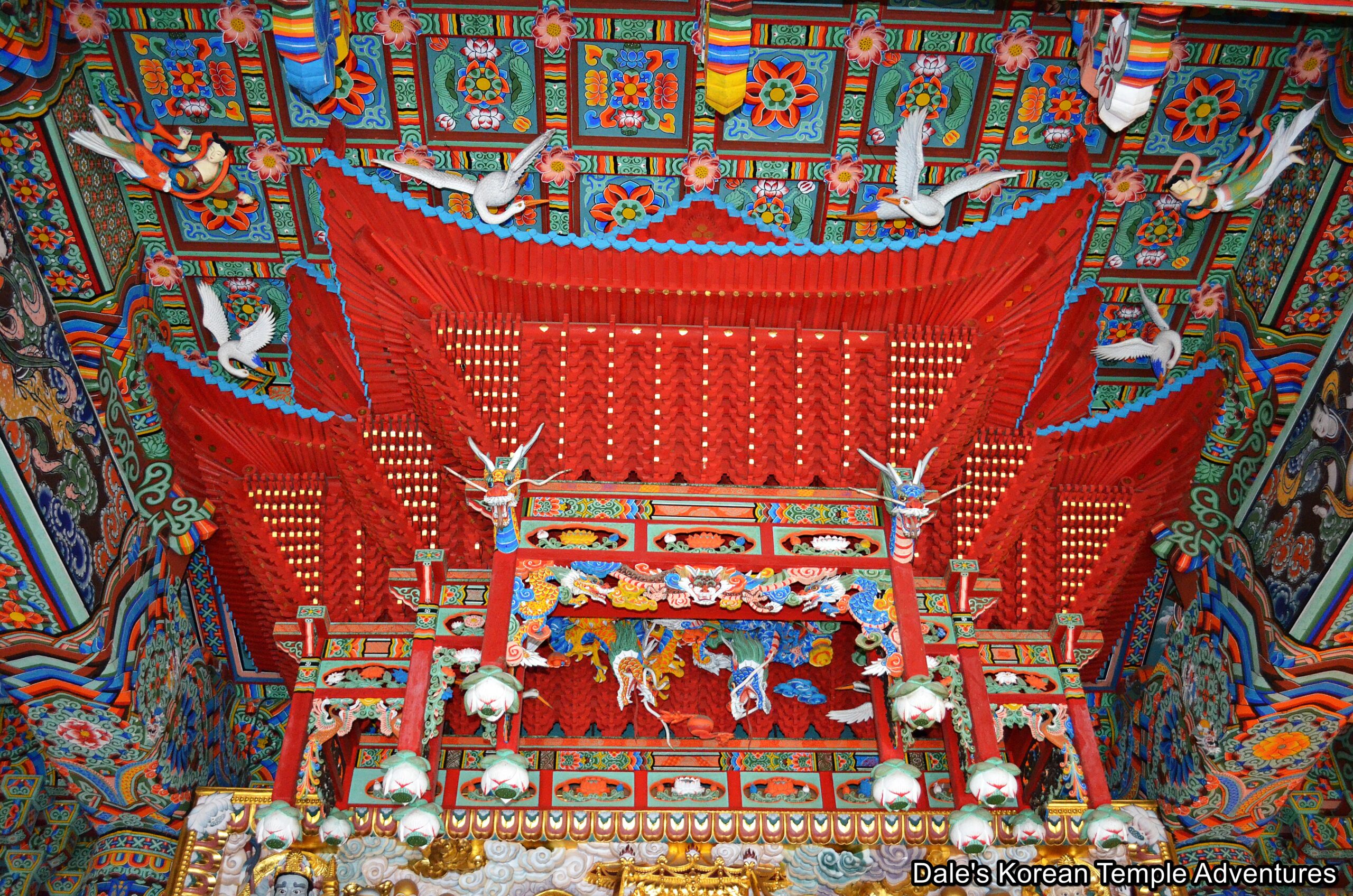
Canopy at Chilbulsa Temple 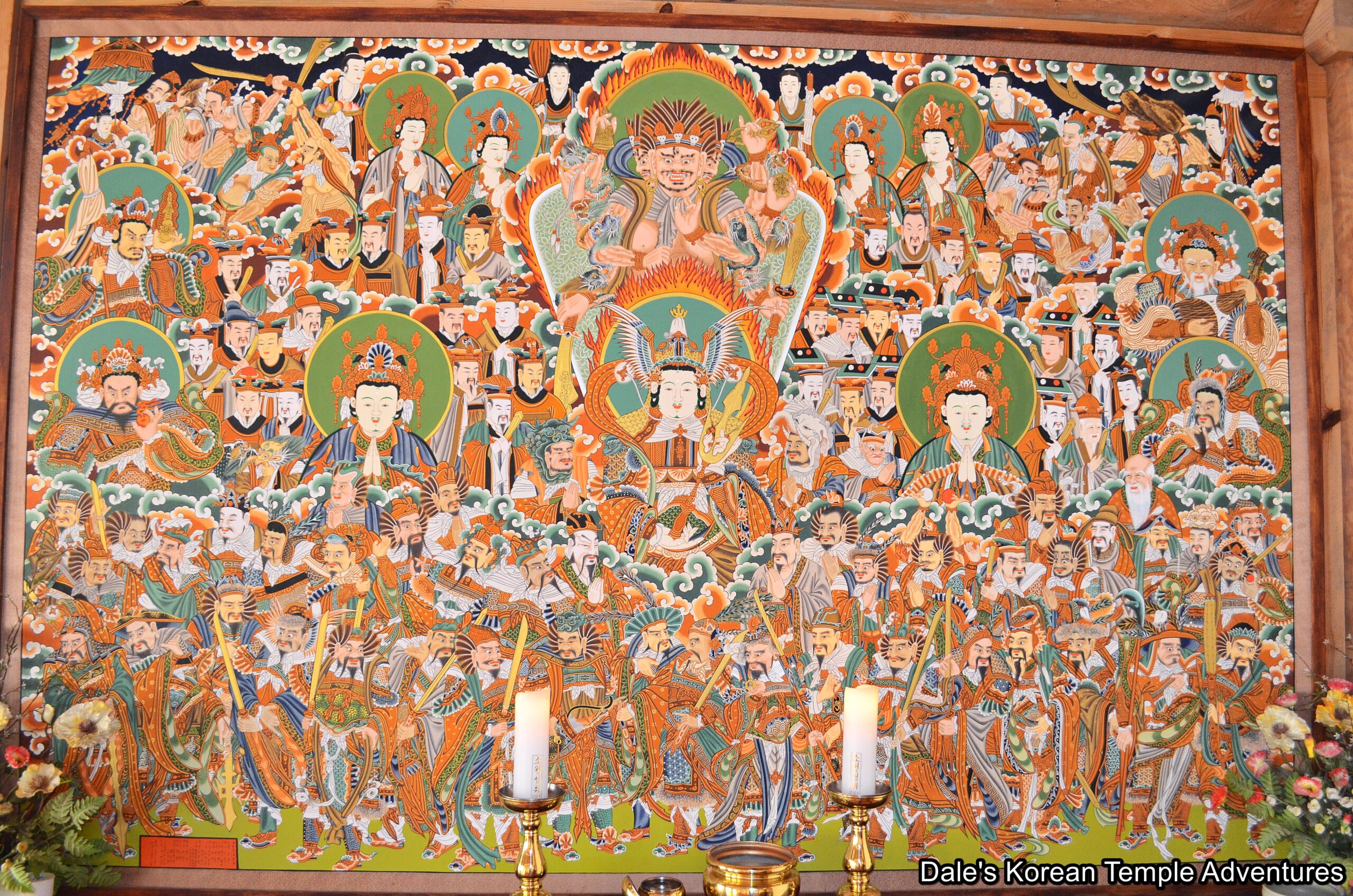
Shinjung Taenghwa at Naejangsa Temple 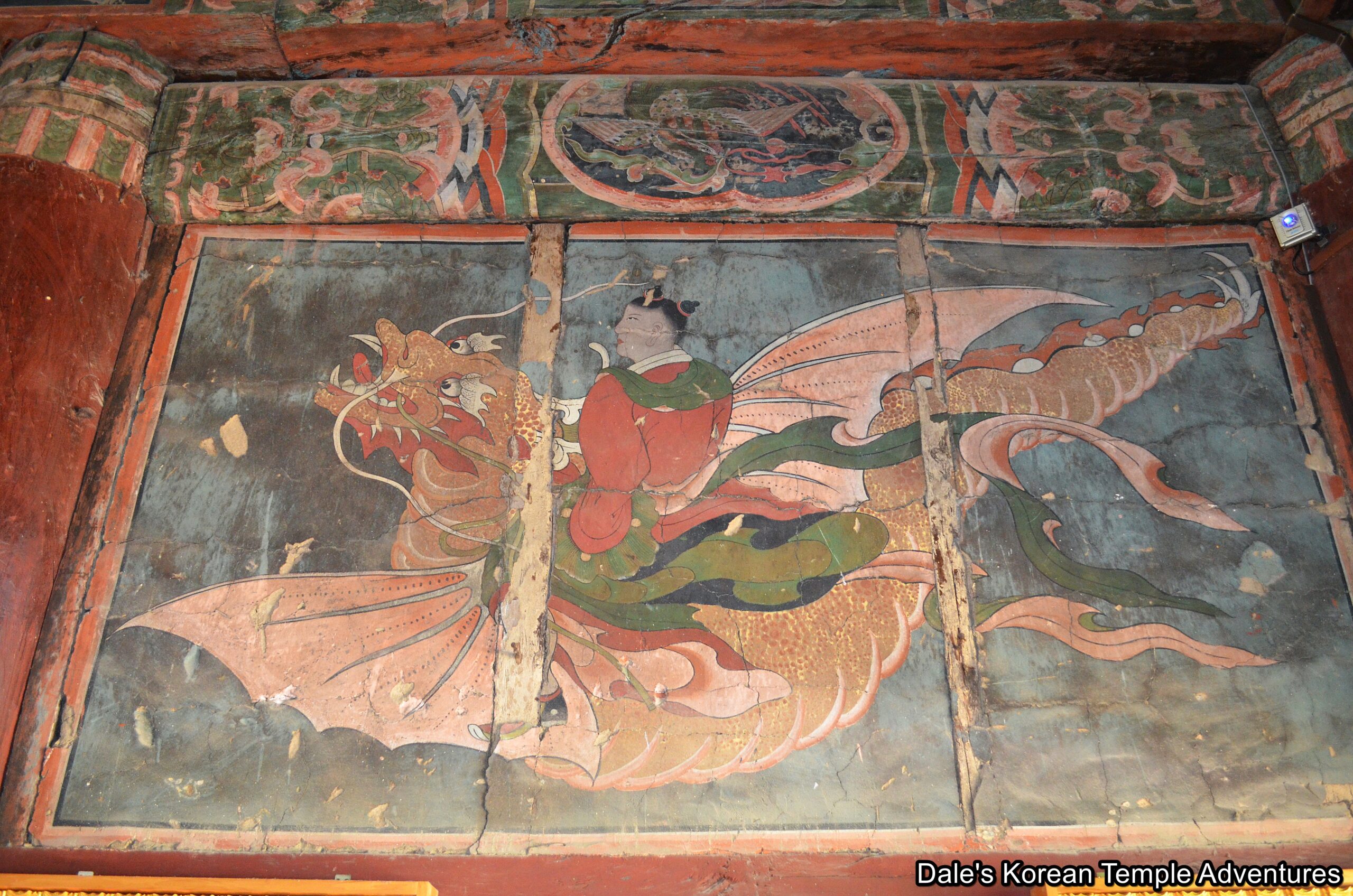
Dragon inside Jikjisa Temple 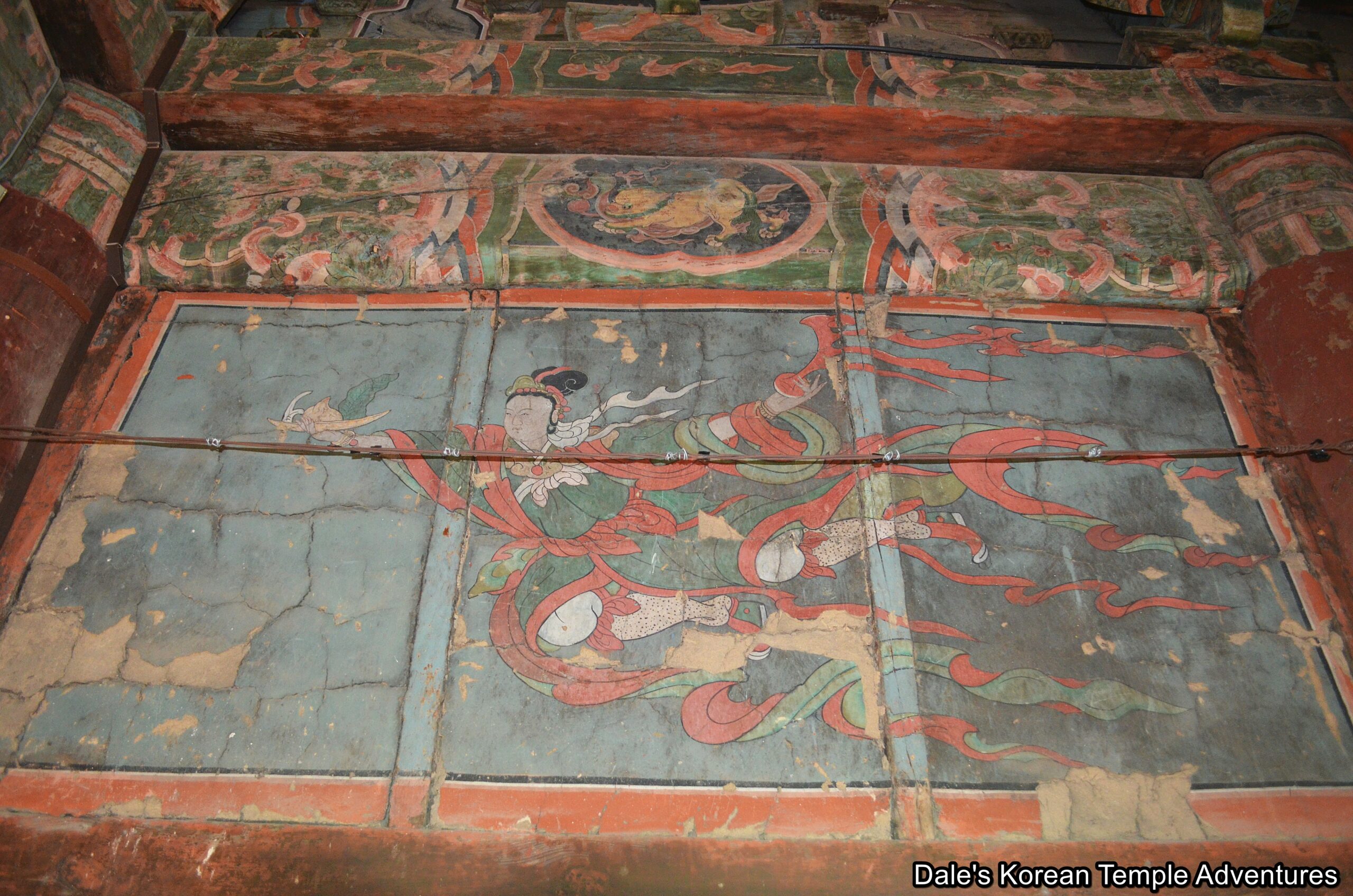
Bicheon inside Jikjisa Temple
The wooden altar that the triad sits upon is called a “sumidan” in Korean. And this altar represents the peak of mythological Mt. Sumeru, which is the peak where the Buddha is enthroned. It’s from this peak that the Buddha emits his light of compassion and wisdom. As for the rest of the hall, it’s almost always the most ornate hall on the temple grounds. And above the triad of statues is usually an elaborate canopy that features carved dragons, birds of paradise, Bicheon (Flying Heavenly Deities), and other decorative motifs. All around the ceiling of this hall can be seen more Bicheon with various floral patterns like lotuses and/or peonies. These floral patterns symbolize the “rain of precious flowers from heaven” described in Buddhist scriptures. Besides the paintings and carvings that adorn the interior walls and ceiling of the Daeung-jeon Hall, there is a mural that hangs inside this hall, which is called a Shinjung Taenghwa. This shamanic guardian mural is symbolic of those shaman deities that have sworn to protect the Dharma.
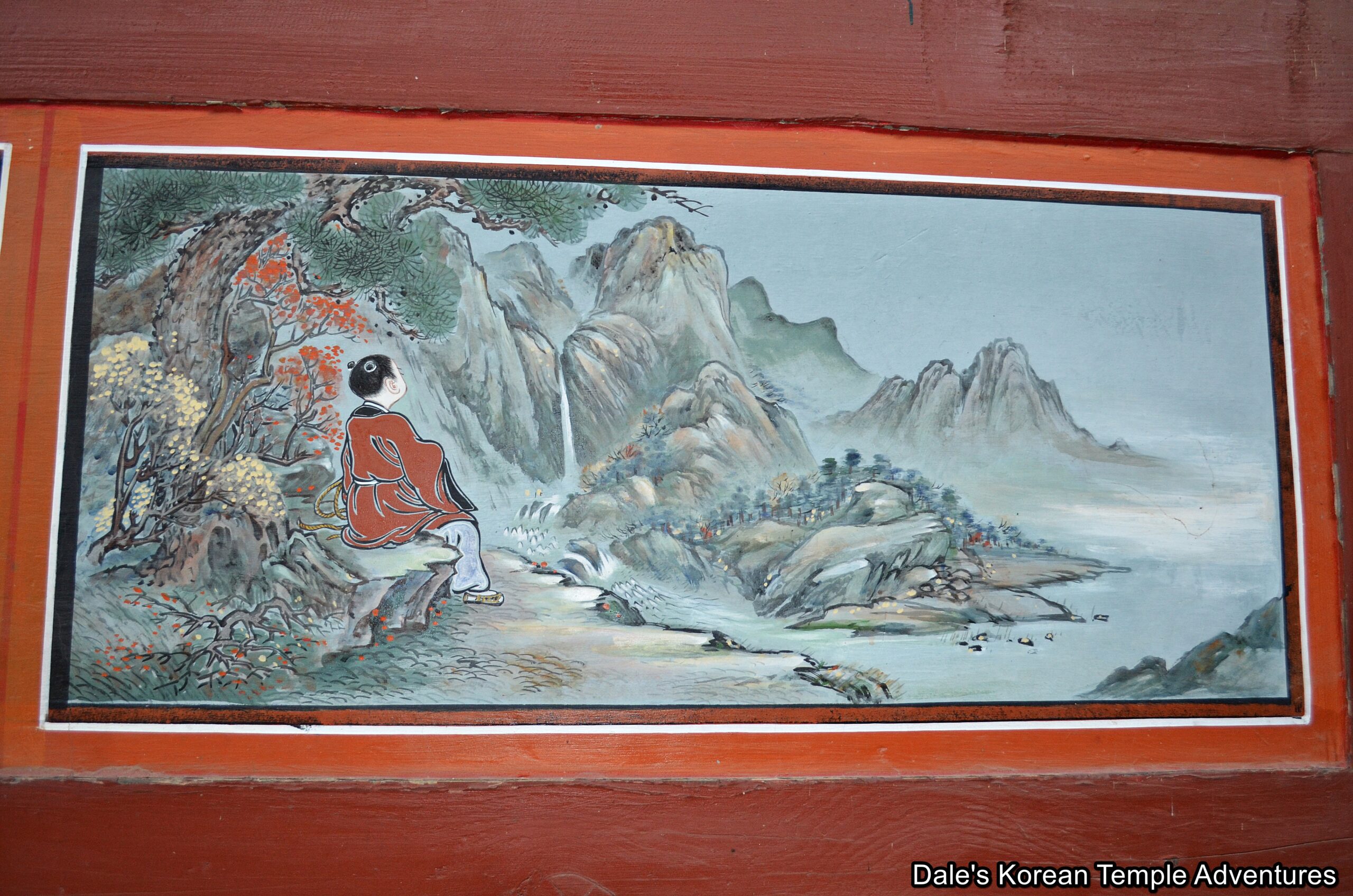
1. Searching for the Ox 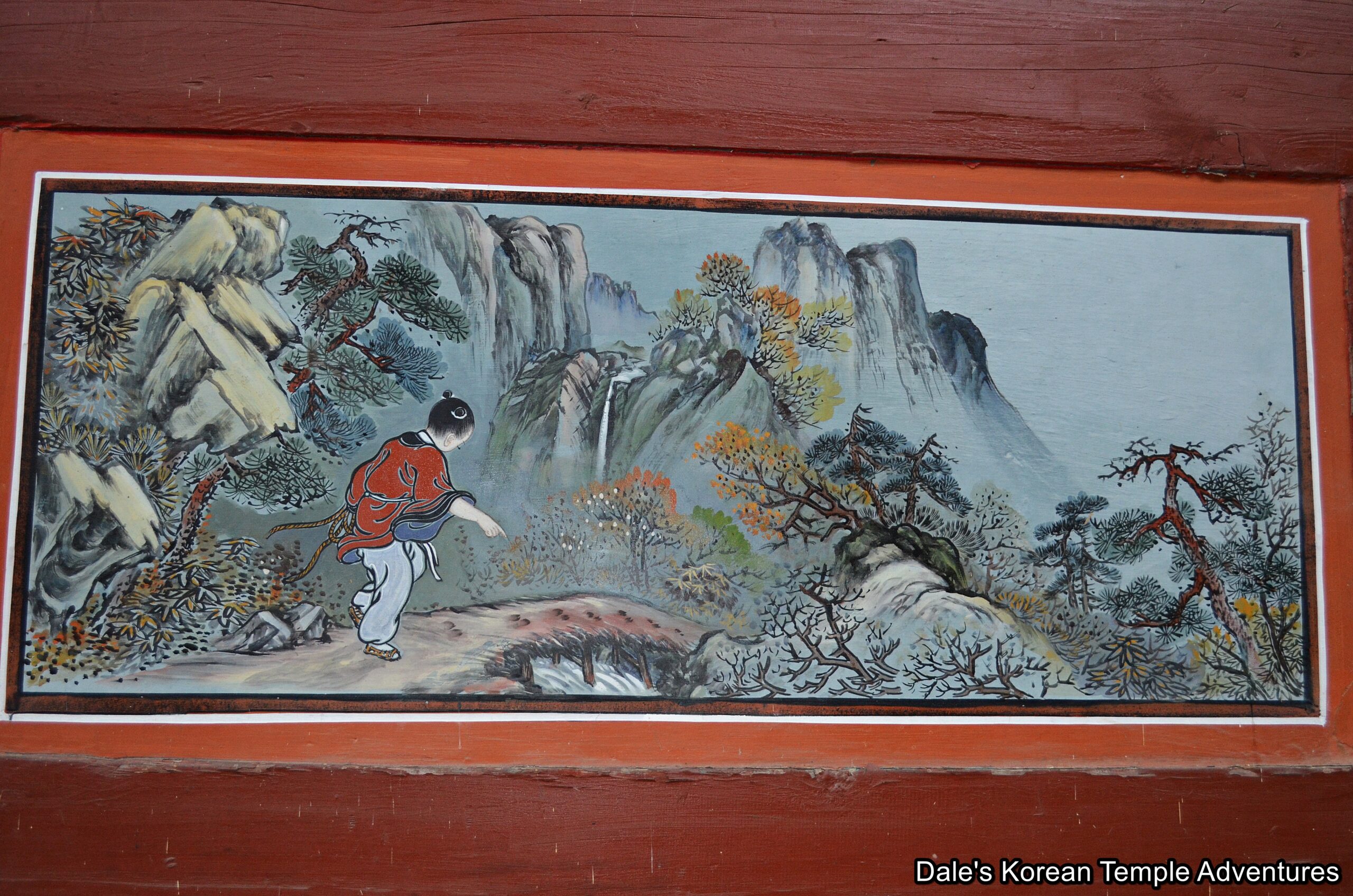
2. Seeing the Tracks 
3. Seeing the Ox 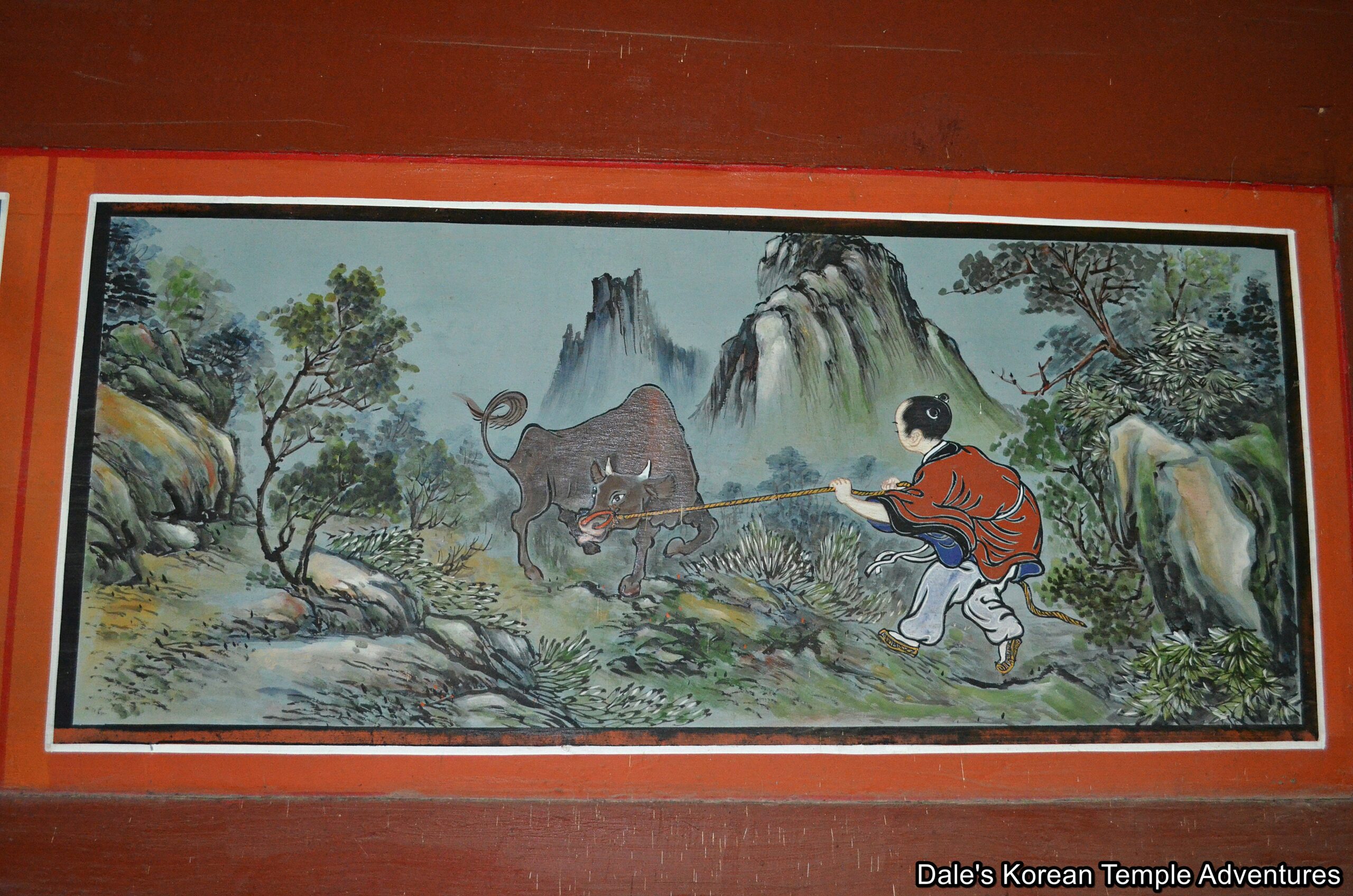
4. Catching the Ox 
5. Tending the Ox 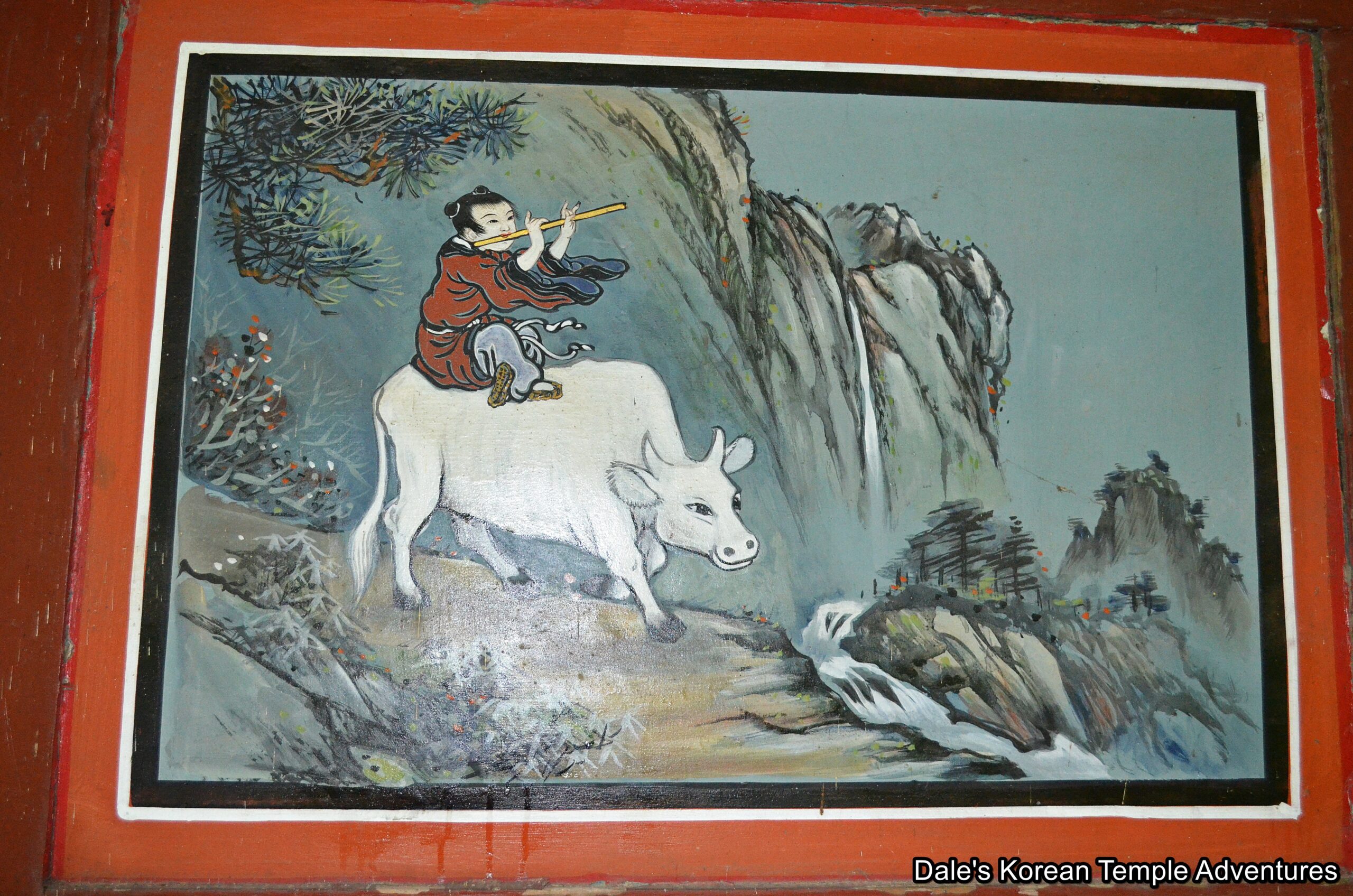
6. Riding the Ox Back Home 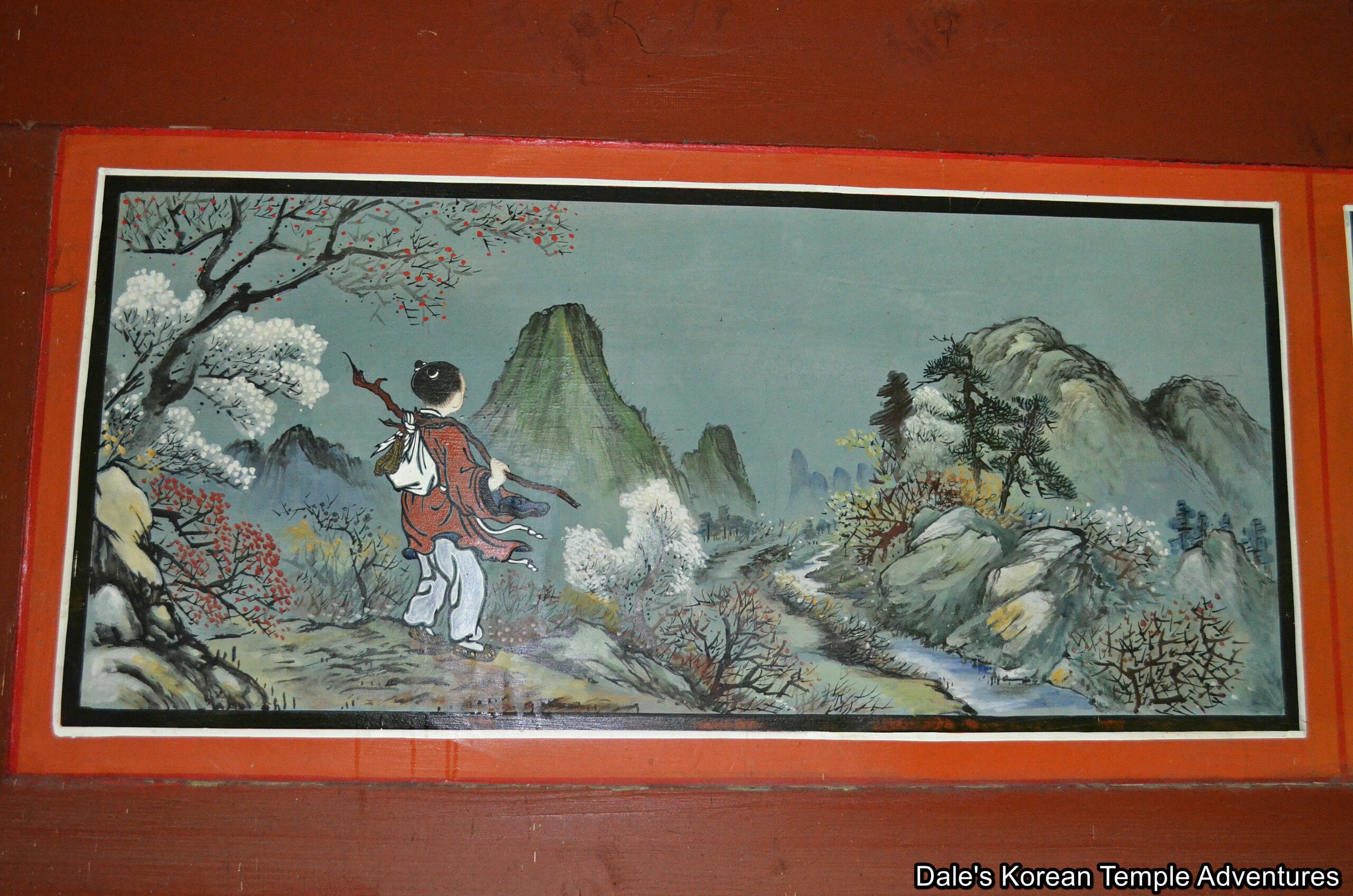
7. The Ox Transcended 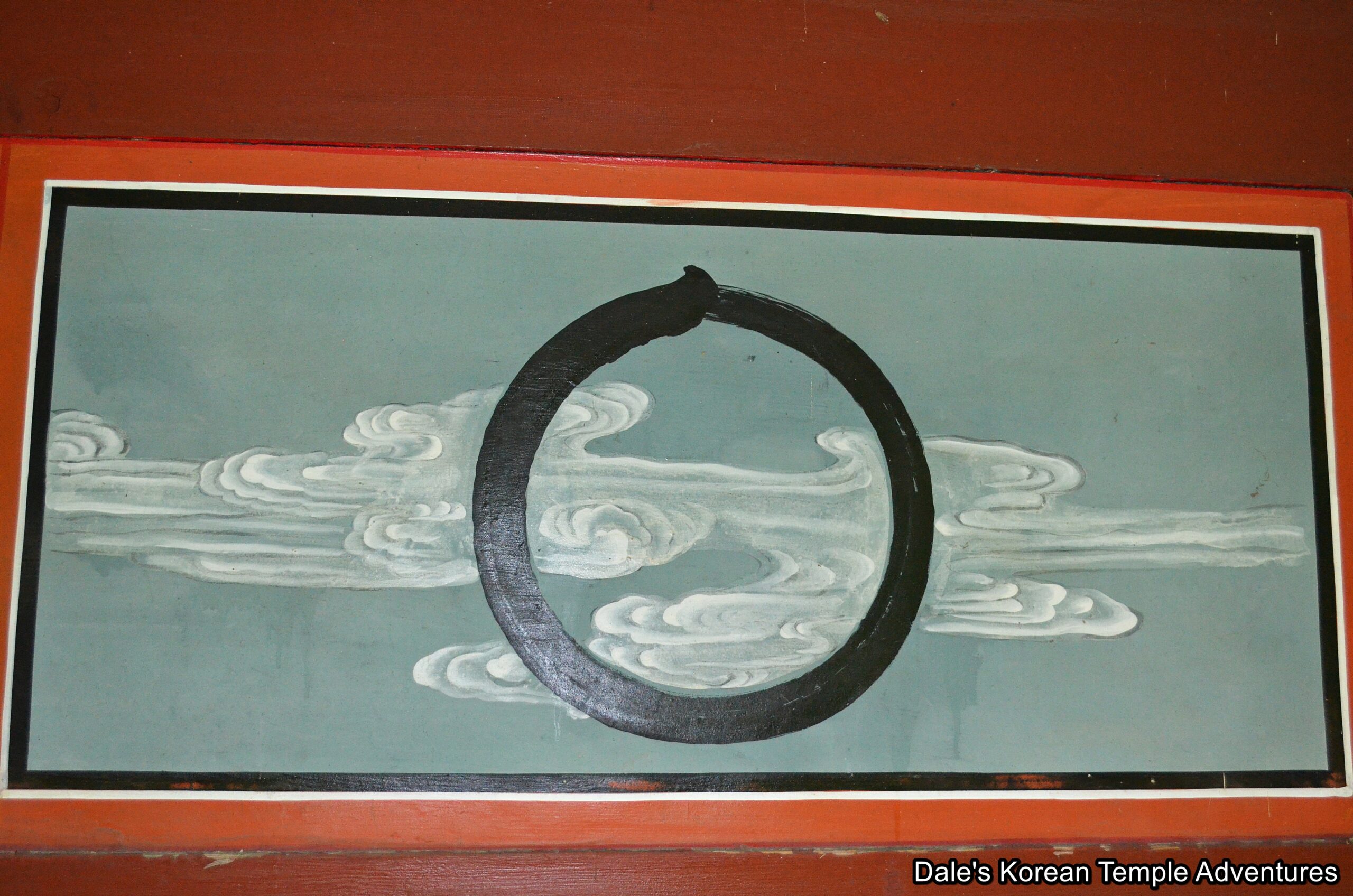
8. Both the Ox and Ox-Herder Transcended 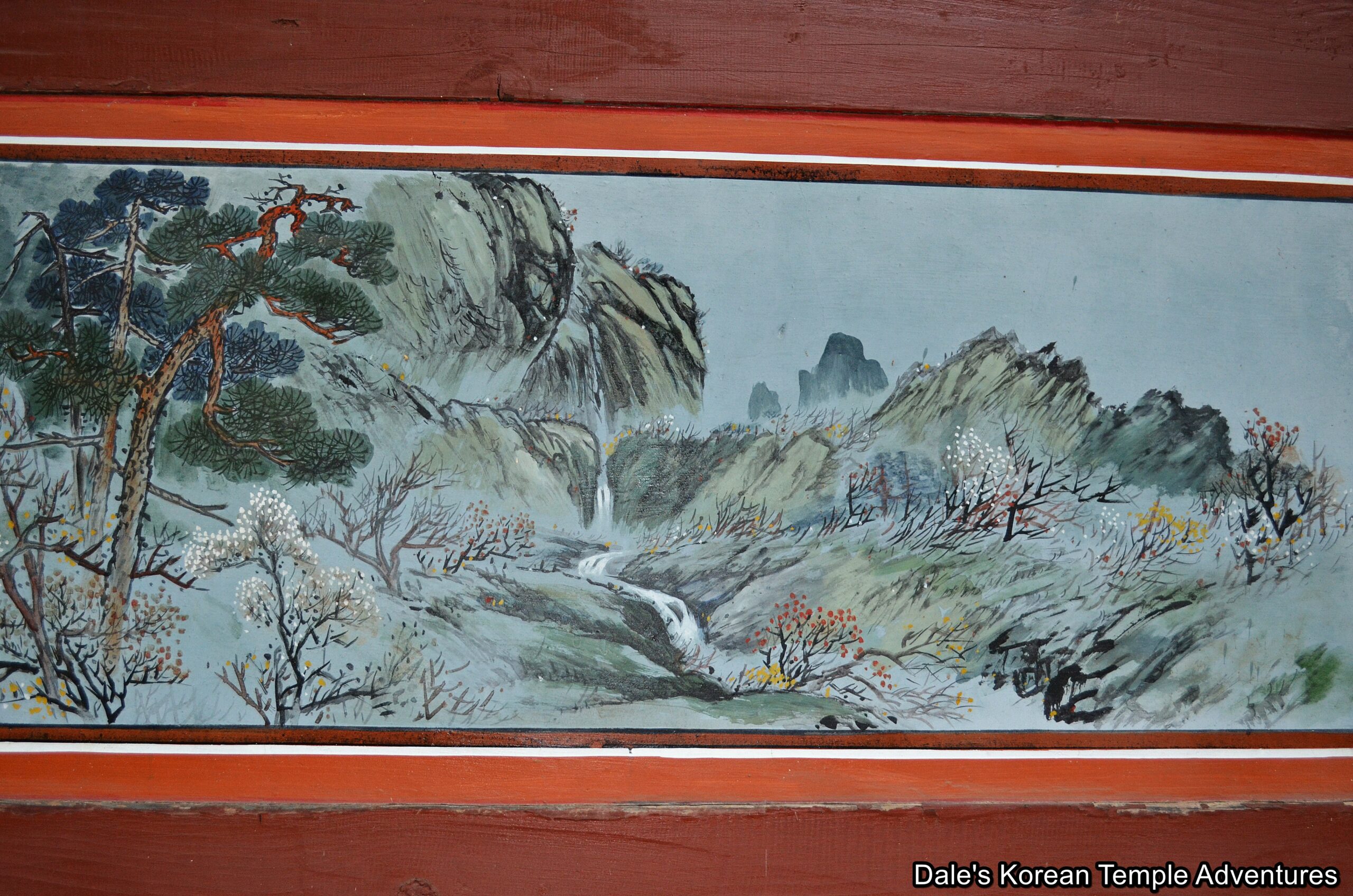
9. Reaching the Origin 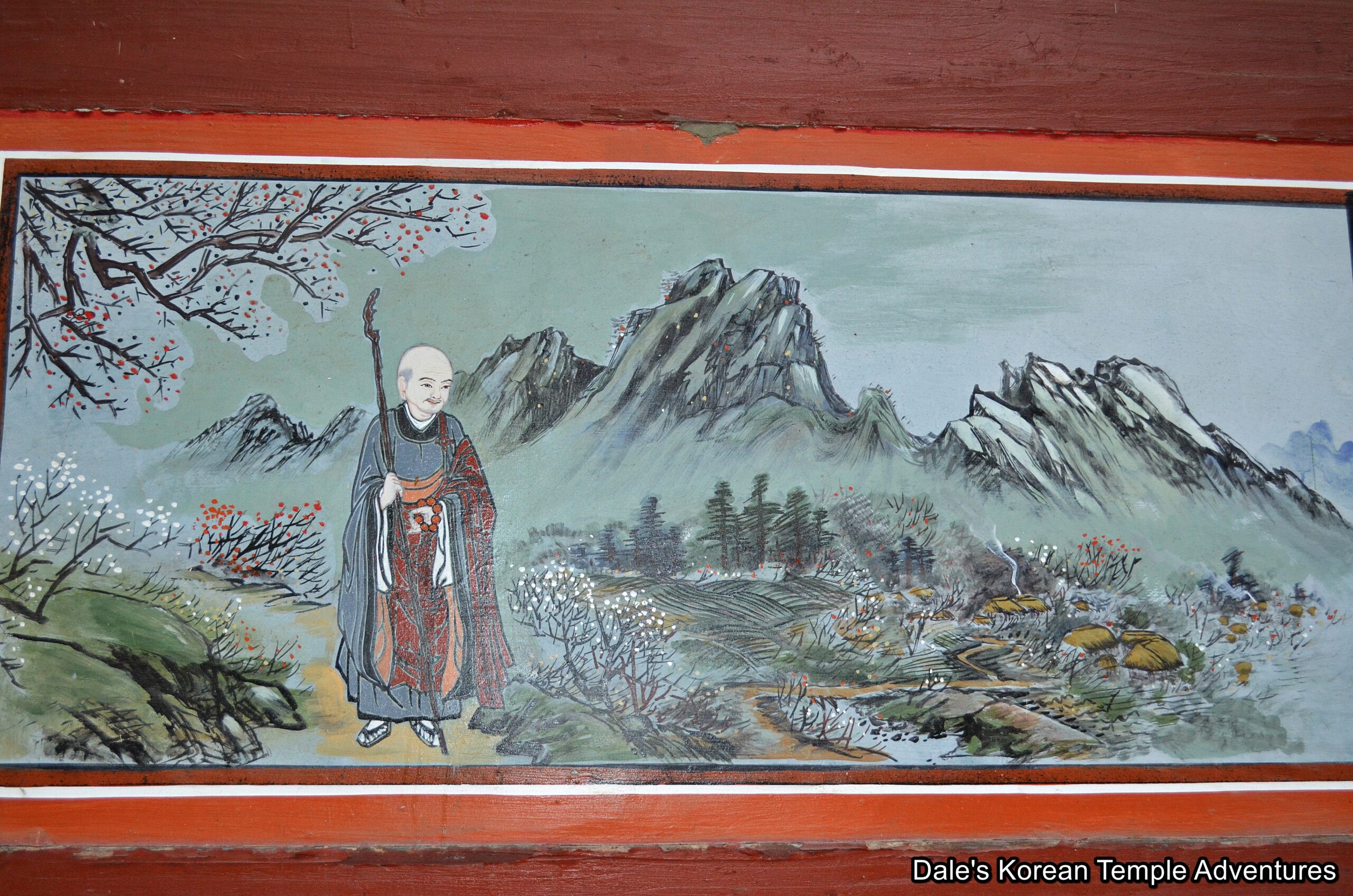
10. In the World
The exterior of the Daeung-jeon Hall can be just as elaborate as its interior. Some of the more common paintings that adorn the exterior walls can be the Ox-Herding Murals, or “Shimu-do,” in Korean, or The Eight Scenes of the Buddha’s Life, or “Palsang-do,” in Korean. Sometimes these two sets sit in combination on the Main Buddha Hall, and sometimes only one set appears. Also, these murals can be highly elaborate in their design or very simple. In addition to these sets of murals, the Daeung-jeon can also be adorned with various paintings of Buddhas, Bodhisattvas, guardians, deities, Bicheon, historic monks, floral patterns, and animals. Finally, the Daeung-jeon Hall typically has wooden sculptures protruding out from under the roof. These sculptures can be phoenixes or dragons. These dragons, much like the entirety of the Daeung-jeon Hall, are a symbol of the cabin on the Dragon Ship of Wisdom. The Dragon Ship of Wisdom, in Buddhism, ferries the faithful to the Pure Land of Paradise.



Conclusion
In total, there are three National Treasures that are Daeung-jeon Halls in Korea. They are the Daeung-jeon Hall at Sudeoksa Temple, Tongdosa Temple, and Bongjeongsa Temple in Andong, Gyeongsangbuk-do.
So the next time you’re at a Korean Buddhist temple, look for the main hall that typically houses the Buddha, Seokgamoni-bul. Not only is it the home to the Historical Buddha in Korean temples, but it’s also the most ornate hall at a Korean Buddhist temple both inside and out.
